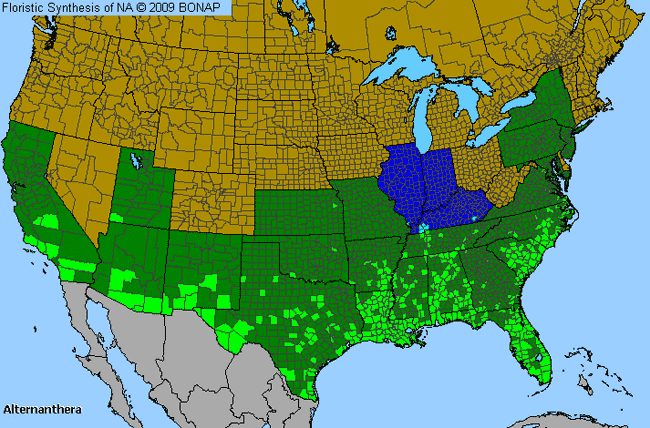Joyweed (Alternanthera)

Joyweed Genus Details

This aquatic plant is native to South America but has spread to the southern U.S. Also known as alligatorweed, joyweed has simple, opposite leaves and small, white flowers. The leaves can grow up to 3/4" long. It grows in aquatic and wetland areas forming spreading mats that are invasive to ditch and stream habitats. These mats can grow up to 3' thick and 100' long, blocking out sunlight needed by submerged, aquatic plants.
Joyweed Allergy Info

This genus is not commonly cited as a source of allergy.
Joyweed Pollen Description

Grains of Alternanthera are of the Tidestromia type. Tidestromia pollen grains, like the rest of the Amaranthaceae family, are spheroidal and pantoporate. The pores are circular and distributed across the grain. The sexine is often tegillate. The pollen grains in this family are virtually impossible to distinguish between the genera.
Species in This Genus

Allergenicity Legend:
 Mild Allergen |
Mild Allergen |
 Moderate Allergen |
Moderate Allergen |
 Severe Allergen |
Severe Allergen |
 Allergy Test Available
Allergy Test Available
Joyweed (Alternanthera) is a genus of the AMARANTHACEAE family.
This genus includes the following allergenic species:
This genus includes the following allergenic species:













